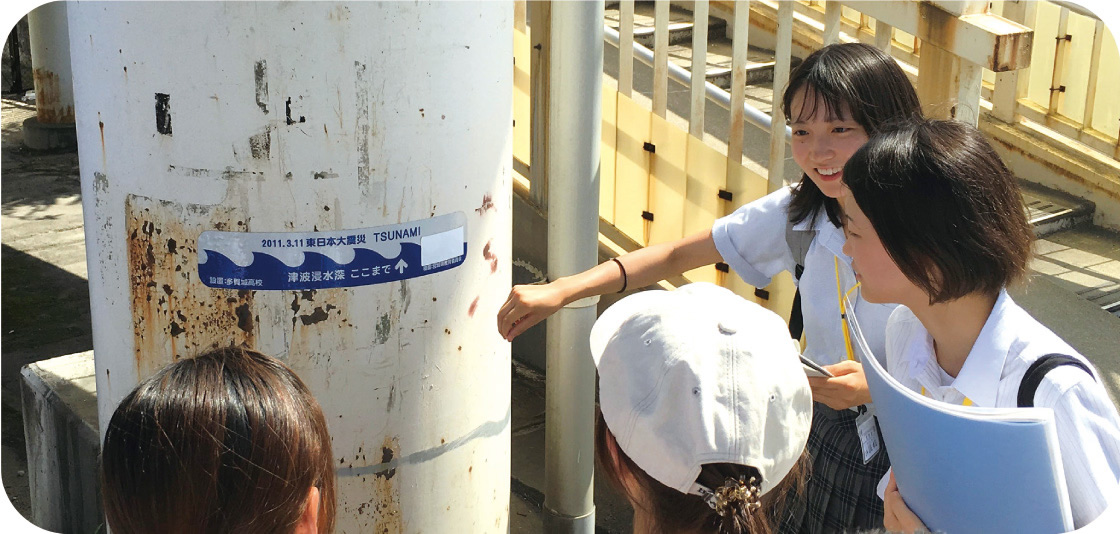Through activities based on experiences from the Great East Japan Earthquake, Tagajo High School students are raising their awareness of disaster preparedness and learning to think about it from a scientific perspective. The three pillars of their study are disaster preparedness, natural science, and international understanding. Students acquire basic knowledge about disaster preparedness and mitigation and deepen their understanding of the natural environment’s diversity through experiments, practical training, and fieldwork. They also learn to communicate with the world about the damage and recovery from the Great East Japan Earthquake, as well as initiatives to prepare for and mitigate natural disasters.
In 2016, the Department of Disaster Science was established to develop a specialized disaster preparedness education program. This department especially focuses on problem-based research. In this program, students decide on their own themes and issues related to disaster preparedness and mitigation individually or in groups, and conduct research activities to solve those issues. Through identifying issues, formulating hypotheses, conducting experiments and fieldwork, summarizing their findings, and presenting their research, the program fosters students’ independence and communication skills.



